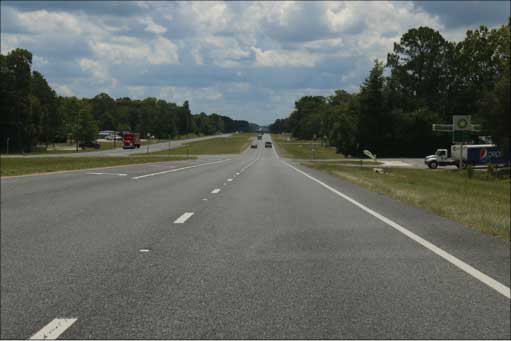text of the prelim report: with some highlights. Except for 74 mph speed of Tesla, and the power was off after impact, really nothing new.
About 4:40 p.m. eastern daylight time on Saturday, May 7, 2016, a 2015 Tesla Model S, traveling eastbound on US Highway 27A (US-27A), west of Williston, Florida, struck and passed beneath a 2014 Freightliner Cascadia truck-tractor in combination with a 53-foot semitrailer. At the time of the collision, the combination vehicle was making a left turn from westbound US-27A across the two eastbound travel lanes onto NE 140th Court, a local paved road. As a result of the initial impact, the battery disengaged from the electric motors powering the car. After exiting from underneath the semitrailer, the car coasted at a shallow angle off the right side of the roadway, traveled approximately 297 feet, and then collided with a utility pole. The car broke the pole and traveled an additional 50 feet, during which it rotated counterclockwise and came to rest perpendicular to the highway in the front yard of a private residence. The 40-year-old male driver and sole occupant of the Tesla died as a result of the crash.
US-27A is a four-lane highway with a posted speed limit of 65 mph. A 75-foot-wide median separates the two eastbound lanes from the two westbound lanes. Additionally, at the uncontrolled intersection with NE 140th Court, both eastbound and westbound lanes incorporate left turn lanes, allowing for a median opening of about 132 feet. At the time of the crash, it was daylight with clear and dry weather conditions. Figure 1 shows the crash scene intersection.
Figure 1. Crash scene intersection, looking east.
The combination vehicle¾operated by Okemah Express, LLC¾was transporting blueberries to a local produce farm. The Tesla struck the right side of the semitrailer, approximately 23 feet forward from the end of the trailer. Damage from the collision was consistent with a 90 degree angle of impact. Only minor damage above the height of the car was found on the semitrailer side panels, and the undercarriage of the trailer also showed only minor collision damage. Figure 2 shows the right side of the semitrailer at point of impact.
Figure 2. Right side of semitrailer. Area in red oval highlights collision damage from passenger car.
Tesla system performance data downloaded from the car indicated that vehicle speed just prior to impact was 74 mph. System performance data also revealed that the driver was operating the car using the advanced driver assistance features Traffic-Aware Cruise Control and Autosteer lane keeping assistance. The car was also equipped with automatic emergency braking that is designed to automatically apply the brakes to reduce the severity of or assist in avoiding frontal collisions.
As a result of the crash, the rear hatch frame separated and folded back over the crushed rear window. Other than the roof structure¾and the front bumper components that engaged the pole¾the main body of the car was generally intact, as shown in figure 3.
Figure 3. Passenger car damage from impact with semitrailer. (Source: Florida Highway Patrol.)
Using three-dimensional laser scanning technology, NTSB investigators documented the crash location, the damaged semitrailer, and the damaged car. The Tesla was equipped with multiple electronic systems capable of recording and transmitting vehicle performance data. NTSB investigators will continue to collect and analyze these data, and use it along with other information collected during the investigation in evaluating the crash events.
All aspects of the crash remain under investigation. The Florida Highway Patrol and Tesla Motors are parties to the ongoing investigation.




